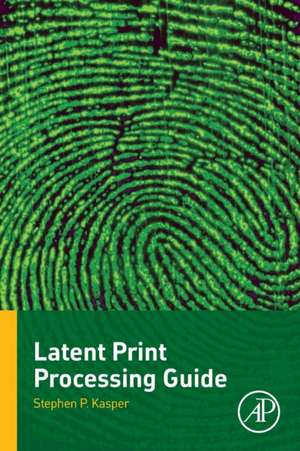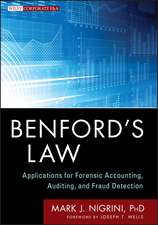Latent Print Processing Guide
Autor Stephen P. Kasperen Limba Engleză Paperback – 13 ian 2016
- Includes history of latent print identification and some of the pioneers and their contributions. Defines the differences between chemical and physical processes and explains process sequence protocols and recovery methods for different types of evidence.
- Chapters include: process selection, application and recovery, special considerations for specific materials, protocol sequence and process formulas, including required materials, application method, expected results, safety measures, and references.
- The text is written so that non-crime scene or non-crime laboratory personnel can also gain valuable information from it.
Preț: 288.36 lei
Preț vechi: 322.13 lei
-10% Nou
Puncte Express: 433
Preț estimativ în valută:
55.20€ • 59.97$ • 46.39£
55.20€ • 59.97$ • 46.39£
Carte tipărită la comandă
Livrare economică 14-28 aprilie
Preluare comenzi: 021 569.72.76
Specificații
ISBN-13: 9780128035078
ISBN-10: 0128035072
Pagini: 202
Dimensiuni: 152 x 229 x 13 mm
Greutate: 0.34 kg
Editura: ELSEVIER SCIENCE
ISBN-10: 0128035072
Pagini: 202
Dimensiuni: 152 x 229 x 13 mm
Greutate: 0.34 kg
Editura: ELSEVIER SCIENCE
Cuprins
PrefaceChapter 1: Forensic Science of FingerprintsChapter 2: Developing FingerprintsChapter 3: Special ConsiderationsChapter 4: Process Sequence ProtocolsChapter 5: The ProcessesAppedix















